





Chestnut
Two absolutely different types of a chestnut differ: horse (which still call a zheludnik) and noble (which also call "present"). Fruits of the last are considered as edible. At French such product is esteemed as the real delicacy which became national, in his honor they even arrange a holiday.
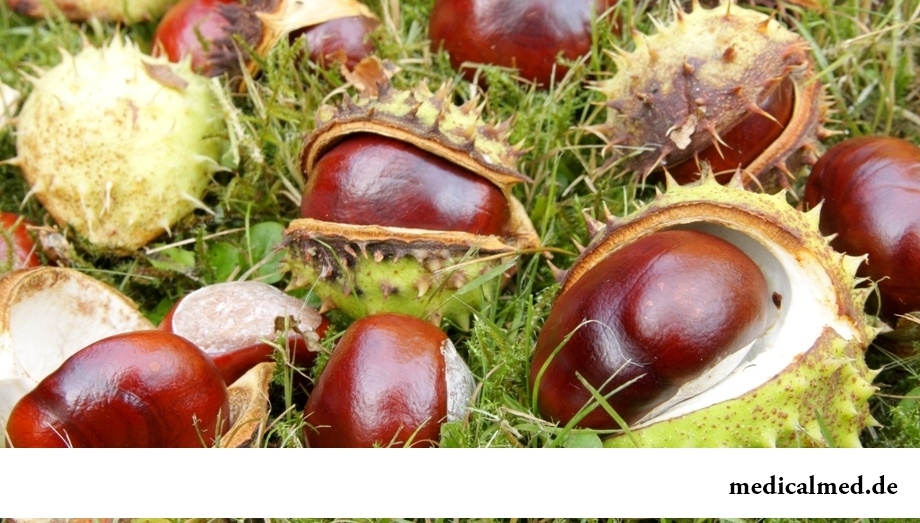
The noble (real) chestnut concerns to family beechen, and is grown up in Europe, North America and Asia. Optimum climate for plants – warm subtropical. This species of a tree differs from a zheludnik in a form of fruits and leaves. In one round box of a noble chestnut there are about 2-4 nutlets. This species of a plant in Russia is not grown up, but it is absolutely simple to buy it in many shops.
And here the world famous horse-chestnut represents a tree with wide krone which can reach 30 meters in height, it differs in petiolar roundish leaves in an outline, more similar on a hand with rather large number of "fingers". Flowers in a tree are collected in the tirsa representing upright pyramidal inflorescences which length reaches 30 cm. Fruits of a plant look as the small spherical boxes covered with thorns when they ripen, reveal three shutters. Usually in a zheludnik there is only one brilliant, dark brown and large nutlet.
Useful properties of a chestnut
Distinctive feature of a chestnut is contents in it rather high content of fats which by quantity is insignificant (in the smaller party) differs only from almonds, the Greek nut, a peanut and a filbert. The chestnut contains about 60% of starch, about 6% of protein, 15% of sugars and it is more than 2% of fats. Vitamins of group B, A and C, mineral substances and cellulose also are a part of chestnut nut.
Because of properties of a chestnut which differ in high content of tannins it is not recommended to eat crude nuts.
All parts of a plant contain in themselves various useful substances, however, in different shares. So, for example, fruits of a chestnut contain biologically active agents, pectin, flavonoids, starch, tannins and oils; in branches and bark – a set of glycosides, oils and tannins.
Spirit tinctures of a chestnut, broths and infusions are applied to treatment of various diseases, such as atherosclerosis, idiopathic hypertensias, diseases of vessels and heart. Also tincture of a chestnut is useful to prevention and treatment of embolisms and thromboses.
In traditional medicine the advantage of a chestnut is used for treatment of diseases of a liver, joint rheumatism, treatment of a varicosity, thrombophlebitis, hemorrhoids, a set of gynecologic diseases which are connected with stagnation in a small basin of blood.
Curative properties also the inedible horse-chestnut in which all is used has: both leaves, and bark, and green cover, and fruits. As for flowers, and they have useful properties, only being on 1-2 day of blossoming.
Use of a chestnut
Most often chestnuts are eaten in a baked state. Such option of preparation is considered the most popular in France where autumn streets literally "roll" in aromas of baked chestnuts. Also nut can be used in a boiled or baked look. Dry nuts can be used as additive to wheat flour.
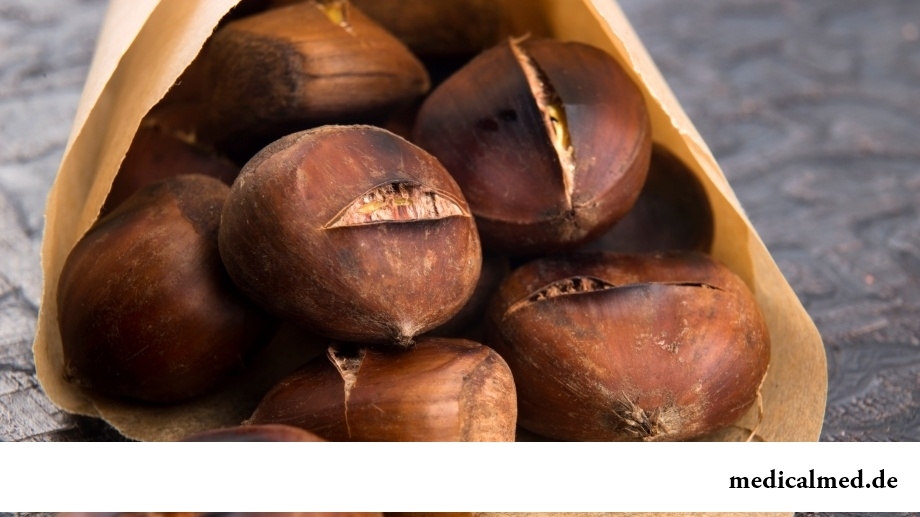
Chestnut caloric content in comparison with other nuts is low and makes only 170 kcal.
In traditional medicine chestnut seeds, the advantage of which is very high at fight against any pains and inflammations, are used. Flowers of a zheludnik are quite good melliferous herbs. On nutritiousness seeds resemble grain grains therefore they make flour of them.
Besides, it is considered that in a horse-chestnut curative energy thanks to which it is possible to get rid of many indispositions and diseases is located. The advantage of a chestnut at mastitis, a mastopathy is proved and even at stagnation of milk which can happen when feeding the baby a breast.
Tincture of a chestnut is applied outwardly to treatment of radiculitis, gout, rheumatism and a sciatica. In this case it is necessary to rub tincture in problem body parts, the course of treatment lasts from about 6 to 8 weeks.
Positively grinding by tincture of a chestnut influences also muscular sheaves, it promotes I rassasyvat hematomas and tumors, at the same time promotes improvement of blood supply in places of dislocations and bruises. Traditional medicine in properties of a chestnut sees an effective remedy for treatment of joint rheumatism, cardiovascular and idiopathic hypertensias.
Harm of a chestnut
Except advantage, the chestnut can bring to a human body and harm therefore before its use it is necessary to consult without fail with the doctor.
As the chestnut reduces a blood svorachivayemost, its independent use in the medical purposes is not recommended at all. Is strictly forbidden to accept drugs with addition of this plant at hypotonia, diseases of kidneys and a liver, and also when feeding by a breast and pregnancies.
Work which to the person not to liking, is much more harmful to his mentality, than lack of work in general.

Statistically, pathologies of a thyroid gland in the world more than 500 million people have. Failures in work of this body conduct to is heavy...
Section: Articles about health
You are office worker, the driver, the fan of winter sports or do not think of life without bicycle? You lead a slow-moving life and you move on the city only on the car? You have no constant partner and you do not love the protected sex? Attention! You one...
Section: Articles about health
Practice of use of table salt in the therapeutic purposes contains not one century. Applications which do by means of the fabric impregnated with saline solution are considered especially effective. They have antibacterial and antiinflammatory effect, help to heal wounds, exempt fabrics from excess liquid. Hypertonic salt solution of potassium chloride is applied outwardly at many morbid conditions. Let's tell about the most known of them....
Section: Articles about health
Several decades ago the basil (the district khan, реан, Reagan) was considered as a part of the Caucasian or east cuisine, but today it is strong for...
Section: Articles about health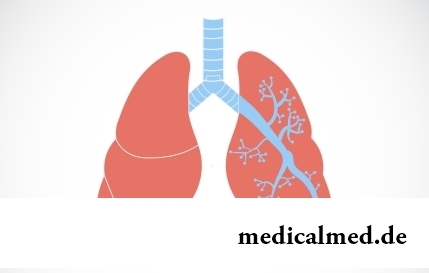
They say that to ensure health and longevity of people it is obliged. Really, at competent approach to these questions, minimization of an adverse effect of many factors does not represent a special problem. Practically everyone has an opportunity to play sports...
Section: Articles about health
History of mankind contains several tens of epidemics whose emergence was compared by eyewitnesses and historians to doomsday. The most terrible of them claimed the lives of millions of people, having made even the whole people to the person of the earth. What they − the diseases striking terror? Whether it managed to the person to find treatment, or he is still powerless before forces of nature?...
Section: Articles about health
When overcomes feeling of hunger, and an opportunity to have dinner fully is absent, having a snack − small on volume comes to the rescue...
Section: Articles about health
It would seem, to buy drugs in Moscow does not make a problem – a drugstore, and not one, is available for each resident of the capital within walking distance. And, nevertheless, Internet drugstores become more popular – what it is possible to explain such phenomenon with? Actually m reasons...
Section: Articles about health
Helminthosis is one of the most widespread diseases. Statistically, any species of helminths infected every third inhabitant of the planet. Most of specialists even consider these data strongly underestimated: some uninvited "cohabitants" do not cause the carriers serious troubles, and patients just do not see doctors. The situation is aggravated also with the fact that people know about specifics of similar illnesses very little. At many presence of worms is strong ассоциир...
Section: Articles about health
The varicosity has familiarly many, statistically, this disease more than a half of all adult population. As...
Section: Articles about health
Bulimia and anorexia, are heavy deviations of a feeding behavior, become a cause of death of patients much more often than all other nervous breakdowns combined. In 60% of cases two illnesses accompany each other: patients feel horror before danger on...
Section: Articles about health
Use of medicinal plants in therapy is urgent today, more than ever. The drugs made of curative herbs cannot replace completely modern synthetic drugs, but their use becomes frequent serious help in simplification of a course of many illnesses and improvement of quality of life of chronic patients....
Section: Articles about health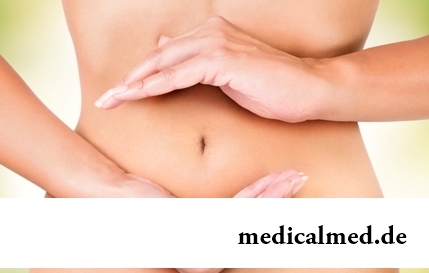
The pancreas performs two functions in a human body: release of enzymes without which digestion carbohydrate is impossible...
Section: Articles about health
Life expectancy in various regions of Earth is not identical. Social stability, economic wellbeing, availability and level of medical care, household comfort, literacy of the population in the field of observance sanitary гигиен exert impact on it...
Section: Articles about health
The stroke is one of the most widespread diseases of the person, annually in the world about 6 million cases of this pathology are registered. According to medical statistics, strokes occur almost three times more often than myocardial infarctions. The disease belongs to heavy, and has an unfavourable result: the lethality reaches 40% among women and 25% among men. A considerable part of the patients who endured a stroke cannot be recovered completely. We suggest readers to examine...
Section: Articles about health
Bathing in broths of medical flowers and plants (phytobathtub) was eurysynusic since Cleopatra who is a good judge of everything...
Section: Articles about health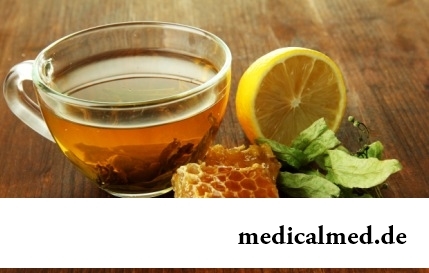
Cold – a state known to everyone which is followed by cold, cough, high temperature, a pharyngalgia. Often the first that we begin to do in hope again to become healthy – to accept medicines which are not always harmless, then...
Section: Articles about health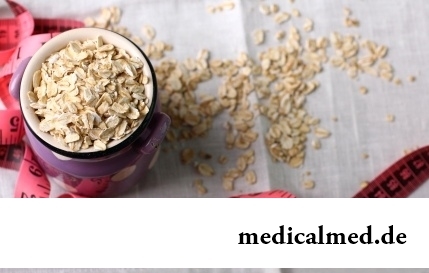
The list of stereotypes of which, apparently, all know strongly includes following: British surely eat porridge for breakfast. Perhaps, not all modern residents of Britain arrive quite so, but for those from them which continue to follow this tradition, it is possible to be glad sincerely: oat flakes are a product which regular use not only helps the person to keep force and beauty long. Porridge in a special way influences an organism, protecting it from seriousness...
Section: Articles about health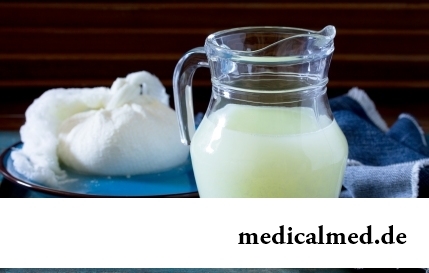
Milk and products of its processing by right occupy one of the main places in a diet of the modern person. They contain necessary...
Section: Articles about health
You heard that laughter prolongs life? Researchers did not manage to establish longevity direct link with sincere fun yet, but several facts confirming beneficial influence of risibility on the state of health are clinically proved....
Section: Articles about health
New year, wedding, birthday, office party – an occasion to drink at the Russian person will always be. How to reduce a negative impact of alcohol by an organism and to avoid a condition of strong intoxication? The most correct council – to refuse the use of alcoholic drinks. Council is true, but not always feasible. We offer several advice which will help you in cases when it is impossible to avoid alcohol intake....
Section: Articles about health
For most of the working people the problem of having a snack is particularly acute enough. Sooner or later there is a question: what is possible quickly for a sja...
Section: Articles about health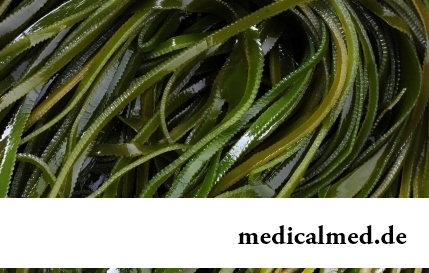
For residents of the countries of Southeast Asia various algas are an obligatory component of a daily diet. Their popularity is connected not only with high tastes, but also with numerous curative properties. Russians are a little familiar with...
Section: Articles about health
We present to yours the TOP of the medicamentous means exerting the stimulating impact on a potentiality, i.e. on ability of the man to commission of sexual intercourse. At once it is necessary to tell that not always disturbances of erectile function can be eliminated with reception of this or that drug. The reasons of decrease in a potentiality there can be a set, from banal overfatigue before tumoral process in a small basin therefore if the man faces similar problems too often, it should turn...
Section: Articles about health
Extracorporal fertilization – one of the most modern methods of controlling with infertility. So far it already helped znach...
Section: Articles about health
For anybody not a secret that the modern person eats not as his ancestors. For the last 100 years in broad access there were absolutely new products which are result of use of the latest technologies in food production. Significantly changed спо...
Section: Articles about health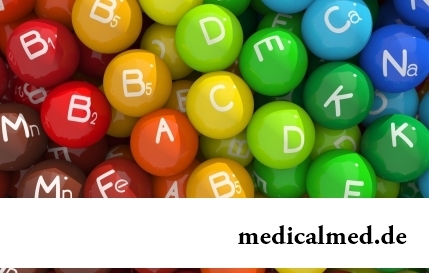
Vitamin complexes belong to the most popular drugs, probably, in our country there is no person who was not hearing about advantage of vitamins and never their accepting. The more vitamins, the better, we consider and as it appeared, cruelly we are mistaken. Whether vitamins, whether so harmlessly general hobby for polyvitaminic complexes and whether it is possible to do without them are so useful? Let's try to understand....
Section: Articles about health
